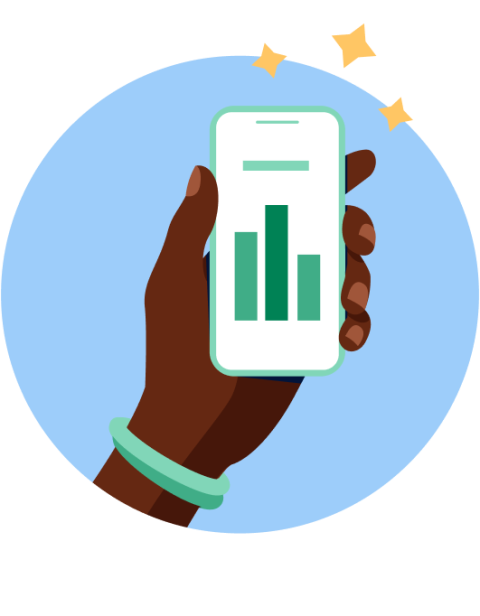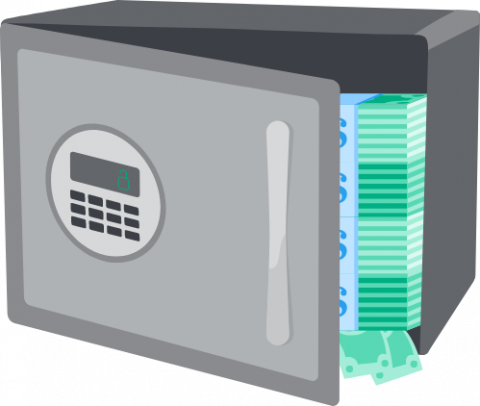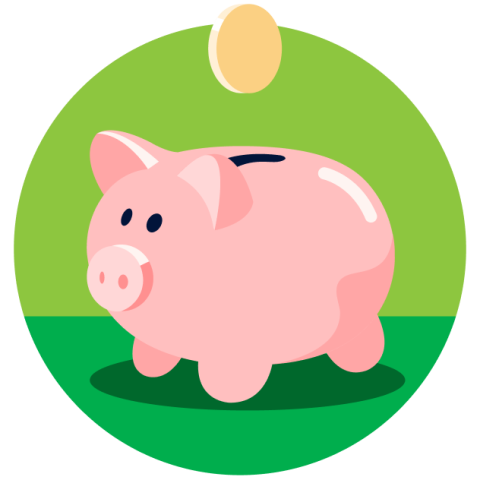How to Get Out of Credit Card Debt in 4 Steps

Many or all of the products featured here are from our partners who compensate us. This influences which products we write about and where and how the product appears on a page. However, this does not influence our evaluations. Our opinions are our own. Here is a list of our partners and here's how we make money.
If you're wondering how to reduce your credit card debt, know that you have plenty of company. Credit card balances increased 15% over 2021, the largest jump in more than 20 years, according to a November 2022 report from the Federal Reserve Bank of New York. As of September 2022, the average amount of revolving credit card debt owed per U.S. household with credit card debt is $7,486 according to NerdWallet’s 2022 American Household Credit Card Debt Study.
Successfully paying off your debt requires a hands-on approach, from determining your best payment strategy to contacting creditors to negotiate rates. Here's how to lower your credit card debt in four steps.

1. Find a payment strategy or two
If you really want to tackle your credit card debt, consider these methods to get you to your goal faster. Having a concrete repayment goal and strategy will help keep you — and your credit card debt — in check.
Pay more than minimum
Credit card issuers give you a monthly minimum payment, often 2% of the balance. Remember, though: Banks make money off the interest they charge each billing period, so the longer it takes you to pay, the more money they make. The average amount of credit card interest being paid is rising as a result of Federal Reserve rate hikes and increasing amounts of revolving credit card debt. It’s estimated that U.S. households that carry credit card debt will pay an average of $1,380 in credit card interest this year, according to the study.
Look on your credit card bill for a “Minimum Payment Warning,” which will have a table showing how long it would take to pay off your balance if you paid only minimums — and how much interest you'd pay.
Debt snowball
The snowball method of paying down your debt uses your sense of accomplishment as motivation. You prioritize your debts by amount, then focus on wiping out the smallest one first. When you’ve paid off that, you roll that payment into the amount you’re paying toward the next smallest, and so on. Like a snowball rolling down a hill, you’ll gradually make bigger and bigger payments, ultimately eliminating your debt.
Debt avalanche
Similar to the snowball approach, an avalanche approach starts with listing your debts. But instead of paying off the card with the lowest balance first, you pay off the card with the highest interest rate. It can be a faster, and cheaper, method than the snowball method.
Automate
Automating your payments is an easy way to make sure your debts are being paid so you avoid racking up additional costs in late fees. If you’re practicing a debt snowball or debt avalanche approach, however, you will have to be a little more hands-on to make sure you’re contributing exactly what you want to each account.

2. Consider debt consolidation
If your credit is good but your debt payments feel overwhelming, consider consolidating them into one account. That way, you only have to make one payment each month to chip away at the balance.
0% balance transfer credit card
It might seem counterintuitive to apply for a credit card when your main goal is to get out of credit card debt, but 0% balance transfer cards can help save you money in the long run. Find a card that offers a long 0% introductory period — preferably 15 to 18 months — and transfer all of your outstanding credit card debt to that one account. You'll have one simple payment each month, and you won’t pay interest.
Personal loans
Similarly, you can take out a fixed-rate debt consolidation loan to pay off your debt. Though you will have to pay interest, interest rates for personal loans tend to be lower than for credit cards, which can still help you save some extra cash. Use a debt consolidation calculator to estimate your savings.
3. Work with your creditors
Reach out to your creditors to explain your situation. A credit card issuer may be willing to negotiate payment terms or offer a hardship program, especially if you’re a longtime customer with a good track record of payments.
If your issuer offers a hardship program, it may provide relief when circumstances beyond your control like unemployment or illness impact your ability to manage payments. And even if you aren’t experiencing unemployment or illness, inflation is causing hardship for many people. According to the NerdWallet survey, 45% of employed Americans say their pay hasn’t increased enough in the last 12 months to keep up with inflation.
Whether you negotiate with your issuer or accept the terms of a hardship program, either option could lead to more affordable interest rates or waived fees, depending on the issuer.
These small changes might be just enough to help you get a handle on your debt, and the worst that can happen is they say no.

4. Seek help through debt relief
If the total amount you owe is more than you can pay each month and you’re really struggling to get your debt under control, it may be time to take some more serious steps. Consider debt relief options, such as bankruptcy or a debt management plan.
Debt management plan
Debt management plans are created with the help of a nonprofit credit counseling agency. Counselors negotiate new terms with your creditors and consolidate your credit card debt. You’ll then pay the counseling agency a fixed rate each month. Your credit accounts may be closed, and you may have to forgo new ones for a period of time.
Bankruptcy
Filing for Chapter 7 bankruptcy wipes out unsecured debt such as credit cards, but not without consequence. Chapter 13 bankruptcy can help you restructure your debts into a payment plan over 3 to 5 years and may be best if you have assets you want to retain. It can stay on your credit report for 7 to 10 years, though your credit score is likely to bounce back in the months after filing. Some debts, such as student loans and tax debt, typically can’t be erased in bankruptcy.
Debt settlement
Under debt settlement, a creditor agrees to accept less than the amount you owe. Even though it may sound like a good deal, it’s not an option for most people. Typically, you hire a debt settlement company to negotiate with your creditors on your behalf. Read more details on how debt settlement works and the risks you face.



